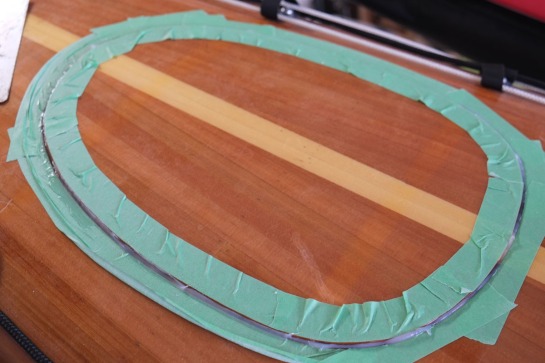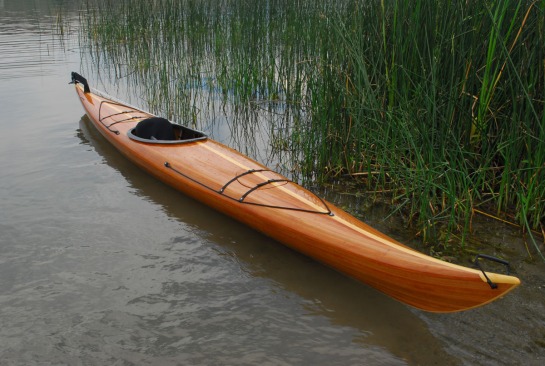Putting on a Personal Flotation Device should be as automatic as fastening a seat belt in a car. Here’s why!

Do you wear a personal floatation device (PFD) when you are on the water, even when it’s flat calm, or you are just making a short trip from the dock? Maybe you are strong swimmer and don’t see the need? If you are one of the many people who don’t then this true story might make you pause and think, because accidents are, by their very nature, unforeseen and unpredictable.
After several years of living on a sailboat, I must admit I had become quite blasé about water safety. Then one day, about 20 years ago, three of us could have died, and only a bizarre second “accident” prevented a tragedy. Here is the story and some of the lessons learnt.
It was a beautiful, late spring day and I was sailing along the UK’s south-west coast. A light breeze was blowing as I dropped anchor off the sleepy Cornish village of Cawsands. I was about 500 meters from the beach which, at this time of year, was only lightly populated with tourists. The only other boat in the area was a small sailboat, about 15 feet in length and crewed by a man and a child.
I was preoccupied with setting the anchor when I heard a distant splash. It was obviously a little more significant than a fish jumping from the water and it distracted me enough to look up. I was alarmed to see that the little sailboat, about 200 metres distant, now only had one occupant, a small child, who sat perfectly still at the rear of the boat, which was still moving under sail.
When I saw an arm rise from the water, some distance behind the boat, then disappear again below the waves the shocking reality of the situation I was becoming involved in started to sink in. Figuring that it would take too long to pull up the anchor and get underway, I threw my very small, inflatable tender over the side of my boat, grabbed a paddle and headed towards a struggling figure in the water.
As I headed towards him, I noticed that the sailboat, its sails full in the light breeze, was starting to turn out to sea. As it passed nearby I realised that its traumatised occupant was probably only 4 or 5 years old. “Do you know how to steer?” I shouted. No response came – he was frozen with fear and I was concerned that a gust of wind could capsize his boat at any moment. There was no way I could paddle fast enough to catch up with him so I concentrated a reaching the swimmer, who unlike the child, was not wearing a PFD and was clearly in considerable difficulty. At least, I thought, somebody ashore must have seen what happened and initiated a rescue.
After an exhausting few minutes of paddling I pulled alongside the man in the water. He was a big man, very overweight, exhausted and frightened. I could see blood in the water from a gash in his side. His knuckles whitened as his stiff hands gripped the line that ran alongside my little inflatable. I realised that pulling him aboard was going to be impossible, as he was already too weak to assist. A combination of shock and hypothermia in the cold Atlantic waters were taking hold. “OK, I want you to hold on and I’m going to paddle us ashore,”I said realising at the same time I was being very optimistic as wind and tide where conspiring to push us further out to sea. He was too exhausted to answer but made a feeble attempt to pull himself out of the water. I instinctively reached out to help him and tried in vain to heave him aboard, but I became alarmed as the tender started to buckle under the load, leading to a situation that could quite easily end up with both of us in the water.
At this point, a bizarre piece of luck occurred which probably saved lives. In the struggle with the swimmer I had lost track of the sailboat, which thanks to mother nature and some random sail settings, had come around in a wide circle and was now moving at a brisk pace and on collision course with us. The first I knew about it was when my tender was stuck with a dull thud from behind, nearly catapulting me into the water. Somehow in the confusion I managed to grab hold of the sailboat’s rigging and hold on for dear life. It turned out to be our salvation, as I managed to clamber on board, find some rope and put it around the man in the water. It was still impossible to pull him aboard so I set sail for the beach, dragging him and my inflatable alongside us.
As we approached the shore, the young boy sat opposite me, shaking and speechless, tears rolling down his cheeks. Looking towards the village the realisation dawned on me that the frantic running about and launching of boats I had expected to see just wasn’t happening. Life was going on totally oblivious to the drama on the water.
As I later paddled back to my boat, I patted myself on the back for a job well done with one hand, and hit myself over the head with the other for not wearing a PFD myself. Putting on a PFD should be as automatic as fastening a seat belt in a car. Remember, being a great swimmer isn’t any help if you are injured or knocked unconscious during a fall overboard – only a PFD is likely to save you!
There were other lessons to be learnt too.
- Two or more adults should be available when taking young children onto the water.
- Have flares or other signalling devices readily at hand and know how to use them. Looking back, if I had taken 30 seconds to fire off a flare or sound the horn before jumping into the tender, I would have alerted people ashore and made a successful outcome more certain.
- Understand that if some one falls overboard you may not be able to get them back on board easily. This is where a floating line, lifebuoys, and boarding ladders become important together with a predetermined plan that everyone on board understands.
- Briefing your crew about the location and operation of safety devices, as well as man overboard procedures, is an essential responsibility of the skipper. Putting it off because it “might alarm the crew” or set a sombre tone is misguided. Ultimately, remember, it may be the skipper who needs rescuing!




